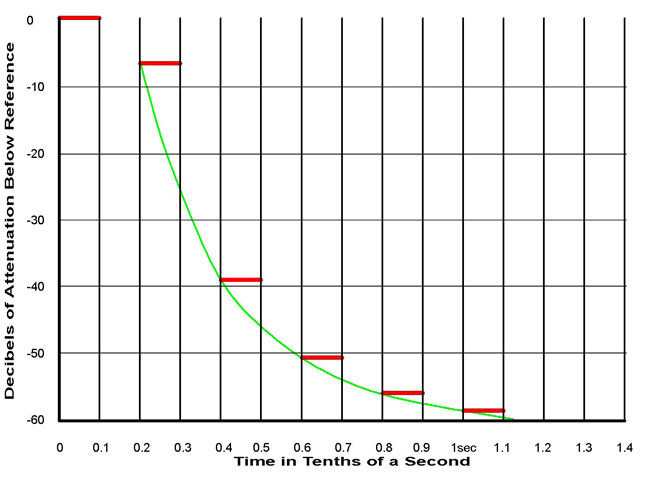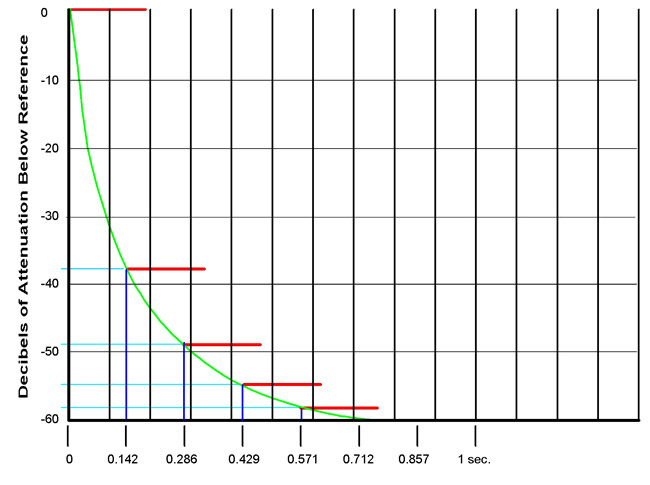RECORDING the Hammond Organ
North Suburban HAMMOND ORGAN Service
Repeat echo is another useful effect that, if not too prominent and used with discretion, can add a lot to certain types of music and also musical sounds. One effect that can be quite interesting is a repeat echo whose repetition rate is the same as that of the tempo of the music. This echo returns after beats at exactly the right tempo and adds to the rhythm. However, in using repeat echo, and especially one whose rate is the same as that of the musical tempo, it is very important not to allow the repeat echo to affect bass tones.
Still another effect, used very sparingly and only for specific types of music and specific instrumental sounds is a type of “plucked” echo effect. Here, the equipment is set up so that the first repeat echo is considerably louder than the direct sound, and it is actually the first echo which will be considered as the main musical sound to be recorded.
The direct signal, therefore, being at a much lower volume, sounds like an initial “pluck” sound. Such an echo effect should mainly emphasize only mid range and treble sounds, and should not be on the bass at all. The plucked echo effect sounds best at a repeat rate of at least seven per second, and the first repeat, which is the main signal, can be followed by a very few much quieter echo repeats. This is an effect which we hear on a few Ken Griffin recordings. I have used it myself, but it is an effect which has a very limited range of use; and it is definitely an effect which must not be overdone. In my case, I might use it only once on an entire CD with 20 or more selections.
The following two graphs illustrate two similar and yet different repeat echo applications. In both cases, they can be produced either by tape or by digital delay. We tend to favor digital delay today as we have a much broader range of adjustment to get exactly the sound we want. Tape delay is limited to specific delay times which depend on both the tape speed and also the distance between the record and playback tape heads. Digital delay allows us to adjust the delay to an accuracy of ± 0.001 second.

Figure 12, above. A repeat echo with a rate 0.2 second. The first repeat is almost as loud as the original, but the volume of the echo drops fairly fast. Figure 13, below. This echo has a repeat rate of seven per second. It also drops in volume very signifiantly. This effect is not too prominent, and it would work if were were making a recording with an older, more conventional tape deck that had echo capability, but we had no other means of adding reverb. It would take away the "dead" effect of recording with no reverb at all but would not be either too obvious or prominent.

These above two diagrams illustrate graphically two different variations of repeat echo. The one in figure 13 is very subtle, and was often done when recording was done on tape. This very slight tape echo would be just enough to add a little ambience to a recording made directly from the console preamp of a traditional Hammond, but it would not be prominent enough to call attention to itself. Unless sparingly used as an occasional novelty effect, repeat echo should be strictly a slight background effect only.
There are three different places in the recording process where we can add digital enhancements. On the next page we'll look at these and see the reasons for the possible choices. In all cases, however, this article is really a set of suggestions. There are no truly definitive rules in recording. If it sounds good, it is good. If it doesn’t sound good, then these suggestions will help to achieve better results.
Back to Page 7. Page 8. Go to Page 9.